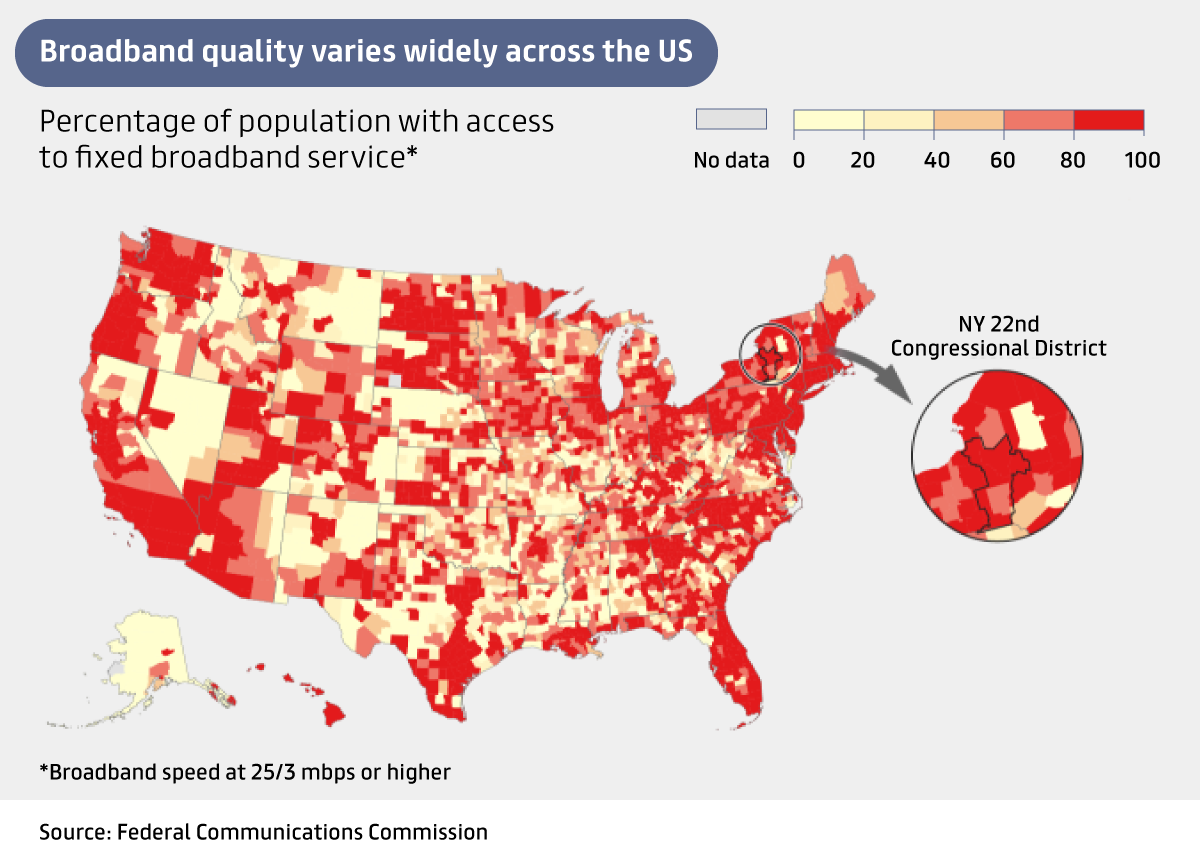US Rural Broadband Funding Update

Two recent programs are focusing on rural broadband funding and bridging the digital divide. Together, the U.S. Department of Agriculture’s (USDA) Reconnect Program and the Federal Communications Commission’s (FCC) upcoming Rural Digital Opportunity Fund (RDOF) are allocating funds in excess of $21 billion.
The USDA is making $550 Million in funding available in 2020 for the second round of its $550 million Reconnect Pilot Program. Up to $200 million will be made available for grants, up to $200 million for 50/50 grant/loan combinations, and up to $200 million for low-interest loans. “Our core mission at USDA is to increase rural prosperity through boosting economic opportunity in rural America,” stated U.S. Secretary of Agriculture Sonny Perdue. “We know that rural communities need robust, modern infrastructure to thrive, and that includes having access to broadband e-Connectivity.”
The Federal Communications Commission’s (FCC) new Rural Digital Opportunity Fund (RDOF) will be providing up to $20.4 billion in funding over the next 10 years to build and connect gigabit broadband speeds in unserved rural areas. This follows the FCC’s Connect America Fund (CAF) program, designed to expand access to voice and broadband services for areas where they are unavailable. Recipients of RDOF funding will deploy broadband service with at least 10 Mb/s downstream and 1 Mb/s upstream to a number of rural locations. According to the FCC bringing fibre cable to every US household could cost $80bn. The Fiber Broadband Association calculates that it will take an additional $70bn to reach 90% of U.S. households. Deloitte estimates a significantly higher cost of $150bn. We estimated 70B to reach 90% of US households by 2029.
According to the Federal Communications Commission 21 million Americans lack high-speed internet access. However, a recent report from Broadband Now claims this figure is, in fact, twice as high. The Pew Research Center estimates that one third of rural Americans don’t have broadband at home. A 2019 survey showed that rural Americans are less likely to have home broadband that their urban and suburban counterparts and are also less likely to own multiple devices or services they can use to go online. A survey conducted the year before indicated that 22% of adults living in a rural area don’t use the Internet at all: twice as many as among urban or suburban residents.
“If we don’t see a greater investment in fibre broadband in rural communities, the digital divide will continue to worsen,” explains Lisa R. Youngers, President and CEO of the Fiber Broadband association. “People in unconnected parts of the country will lose educational and employment opportunities. For students, the digital divide creates what's been called the ‘homework gap’ - an achievement disparity between the new ‘haves’ and ‘have-nots’. There are countless stories of young students doing their homework at McDonald's because they cannot log in from home. This disparate treatment is leading to additional hurdles for already disadvantaged students. Slow connections preclude remote work or e-commerce businesses, forcing people who love their rural communities to move to cities, thereby exacerbating the so-called ‘brain drain’. In times of stay-at-home orders and a massive shift to telework, it means some people aren’t able to do their work at all.”

“Our latest research shows that, with the right investment, it is possible to deploy fibre-based, ultra-fast connectivity to nearly every American home. Within the next ten years, the US has the potential to cost-effectively increase the number of homes passed by all-fibre networks from 40% to 90%. This would take an investment of about $70 billion. To make this happen, state governments should eliminate barriers by encouraging forward-leaning rights of way, pole attachment and battery back-up policies to help accelerate fibre builds. States like Texas, Georgia, North Carolina, Vermont and Mississippi already have created regulatory environments that make fibre deployment easier. Government incentives to private companies to encourage deployment of all-fibre networks in rural communities help, too. Local governments may even want to invest directly in all-fibre networks to propel community growth. On the federal level, Congress can support public-private partnerships (P3s), the FCC continue investment programs like Connect America Fund and the US Department of Agriculture can expand its RUS ReConnect Program.”
“In local communities, individuals will first need to find likeminded people who are also interested in bringing fibre broadband to the community and organize to tell the story. Second, groups will need to find local leaders to be broadband champions: members of the city council, mayors, or local leaders from the Chamber of Commerce, schools, libraries or businesses. Third, advocates should find other interested parties that would also benefit from high-speed internet like local businesses, non-profits, or community anchor institutions. Together, coalitions can lobby policymakers to create favourable environments for fibre broadband investment, either from private companies, public-private partnerships, or municipal-owned broadband.”







